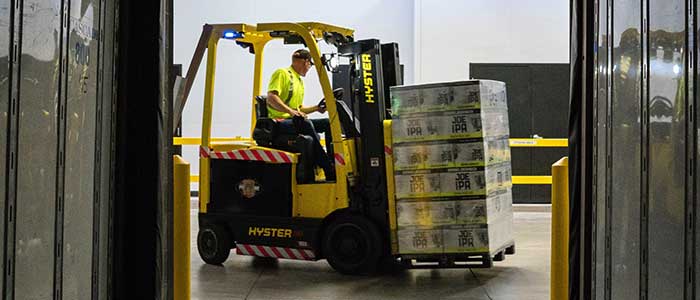Article Page – Fleet Maintenance KPIs
Fleet Maintenance KPIs
In this article, we'll explore key performance indicators (KPIs) focused on fleet maintenance, specifically vehicle health, tracking and reducing maintenance costs, and minimizing downtime.

Purpose of fleet maintenance KPIs
Assuming you fully understand the meaning of fleet management in general, how do you consider a fleet company to be successful? It will be based on how well it is able to achieve its goals. In a business setting, these are called Key Performance Indicators (KPIs) which are the metrics that indicate the effectiveness of the operations toward key business objectives. The KPIs in a fleet are the measurable targets that would evaluate the efficiency and performance of the fleet management.
It is necessary for an organization to have a KPI because this builds an organizational plan and direction in every aspect of the job and to evaluate whether a certain task in fleet management adds value to the success of the organization.
In this article, we will talk about the key performance indicators (KPIs) of fleet maintenance, as they are a key part of fleet maintenance best practice. Fleet maintenance is a part of fleet management services but is more focused on vehicle health, repair costs and proactive or reactive maintenance and downtime reduction. By the end of this article, we’ll also cover some solid strategies and tailored approaches to achieve these fleet maintenance KPIs.
Fleet Management KPIs versus Fleet Maintenance KPIs
Fleet management is the process of handling all the systems and processes that run within a fleet. This essentially covers all the components of a fleet company which are fuel management, driver administration, vehicle acquisition or lifecycle management, route optimization and, of course, maintenance.
Each of these areas comes with its own set of KPIs. However, we’ll put the spotlight in this post to fleet maintenance–which is the backbone of a fleet.
Its KPIs are measured through maintenance and repair costs, vehicle health, proactive or reactive maintenance and downtime reduction.
If your goal is improving the quality of your vehicles by reducing repair costs and maintenance issues, this is where your focus should be.
What are the fleet maintenance KPIs?
The primary goal of fleet maintenance is for its vehicles to reach their maximum lifespan with a minimum amount of downtime and low repair costs. This is a clear indication that the maintenance has been effective in avoiding possible issues by being proactive in its maintenance plans.
The following are the key performance indicators in fleet maintenance and how it is measured:
- Vehicle Health
- Tracking and reducing maintenance costs
- Reducing unexpected downtime
Vehicle Health as a KPI
Vehicle health is the overall condition of the vehicle, which includes frequency of breakdowns, tire condition, or incident relating to vehicle performance. These are measurable using several ways, such as:
• Maintenance History – this covers maintenance downtime, repair cost to identify recurring issues
• Fuel Efficiency – monitoring distance the vehicles have travelled and its fuel consumption as it relates to vehicle performance.
• Tire pressure and vehicle usage – to capture data identifying durability of tire and vehicle underperformance in relation to vehicle loads, underinflated tires, driving habits and road conditions
• Driver behavior data – detects driver behavior in handling vehicle, gathers data points like harsh braking/acceleration, speeding incidents or compliance regulations
• Engine Diagnostics (OBD)- collects data from the vehicle’s engine through sensors
• Telematics – combines advance technologies into a real-time monitoring dashboard
Telematics is a modern breakthrough of vehicle condition monitoring making it a powerful tool for tracking vehicle health as a KPI. It provides a data-driven procedure that works by combining technologies to perform GPS tracking, monitoring driver behavior, onboard diagnostics, fuel efficiency, and route optimization. The methods used provide measurable data points to feed into the telematics systems to measure the vehicle health and performance. Engine Diagnostics or OBD (On-Board Diagnostic) uses a network of sensors built into the vehicle to monitors vehicle performance, emission and fault codes or trouble codes. Telematics uses OBDs to collect data along with other data methods but there are fleets that rely on OBD data to measure KPIs.
Tracking and Reducing Maintenance Costs
Reducing downtime as a KPI of a fleet is essentially monitoring the frequency and the duration that the vehicle is unusable and implementing proactive measures to keep vehicles operational. This could be done by scheduling and performing regular vehicle inspections or Daily Vehicle Inspection Reports (DVIR) to constantly monitor the vehicle condition.
Timely inspections allow for early detection of potential issues, ensuring they are addressed immediately. This also allows for spotting trends, identifying the root cause, and making data-driven decisions. If your fleet is experiencing declining productivity, missed deliveries and appointments, and incurring penalties along with a loss of trust from clients, then it’s high time to put more focus on reducing unexpected downtime of the vehicles.
Daily Vehicle Inspection Report (DVIR) as part of fleet maintenance
Below is an example of a Daily Vehicle Inspection Report that can help you get started

Use this free Daily Vehicle Inspection Report (DVIR) for yourself
How to Hit Fleet Maintenance KPIs
Achieving optimum vehicle health, reduced maintenance and repair costs, and reducing unexpected downtime are specific and measurable goals to get you started in hitting your fleet maintenance KPIs—this is always the first step: knowing what you want to achieve in your business.
Below are solid strategies to help you hit your fleet maintenance KPIs:
1. Be more data-driven when developing solutions.
This means investing in data collection technologies like telematics systems to get better information on vehicle condition. Data points in each of the goals of the fleet will provide you a good picture of the severity of an issue in the vehicle which cannot simply be achieved by guesswork or by relying solely on experience. Data-driven solutions will also impact the numbers in your maintenance KPIs.
2. Perform regular predictive maintenance to reduce reactive maintenance.
Regular maintenance may be more frequent, but it can significantly reduce your repair costs.
3. Give attention to the drivers’ training and attitude towards maintenance.
The drivers are key individuals who will literally drive your fleet’s success, which means they should at least know or be trained to perform basic maintenance. Their attitude and understanding of the importance of maintenance will help in ensuring it is done on schedule.
4. Use fleet maintenance software with digital checklists to streamline inspections and ensure consistency during inspections.
Betting on digitalization of the inspection reports would substantially improve fleet maintenance inspection in terms of the quality of the report, the ease of tracking it to observe patterns of recurring issues and the convenience it gives to the inspectors or drivers performing the inspection which ensures it is regularly conducted and done right.
These four tailored approaches to hitting KPIs may already be established in the fleet industry, but these are highlighted because they are often overlooked or inconsistently applied. These are actionable strategies that will motivate your team to prioritize fleet maintenance, improve accountability, and driver better KPI performance.
Wrap-Up
Fleet maintenance is a fundamental part of fleet management. In this article, we acknowledged that it is the backbone of the fleet and its KPIs will reflect the efficiency of the fleet operations gaining a better understanding of how to measure vehicle performance, control costs, and reduce downtime. By focusing on these KPIs, allows the organization to have more control to the fleet's success.

Maintenance request form
Streamline and automate the maintenance request process to make maintenance requests easy

Verification of competency (VOC)
Ensure all of your workers are ready to do their jobs and operate equipment

Forklift inspection checklist
Keep those all-important forklifts in great operating condition.

